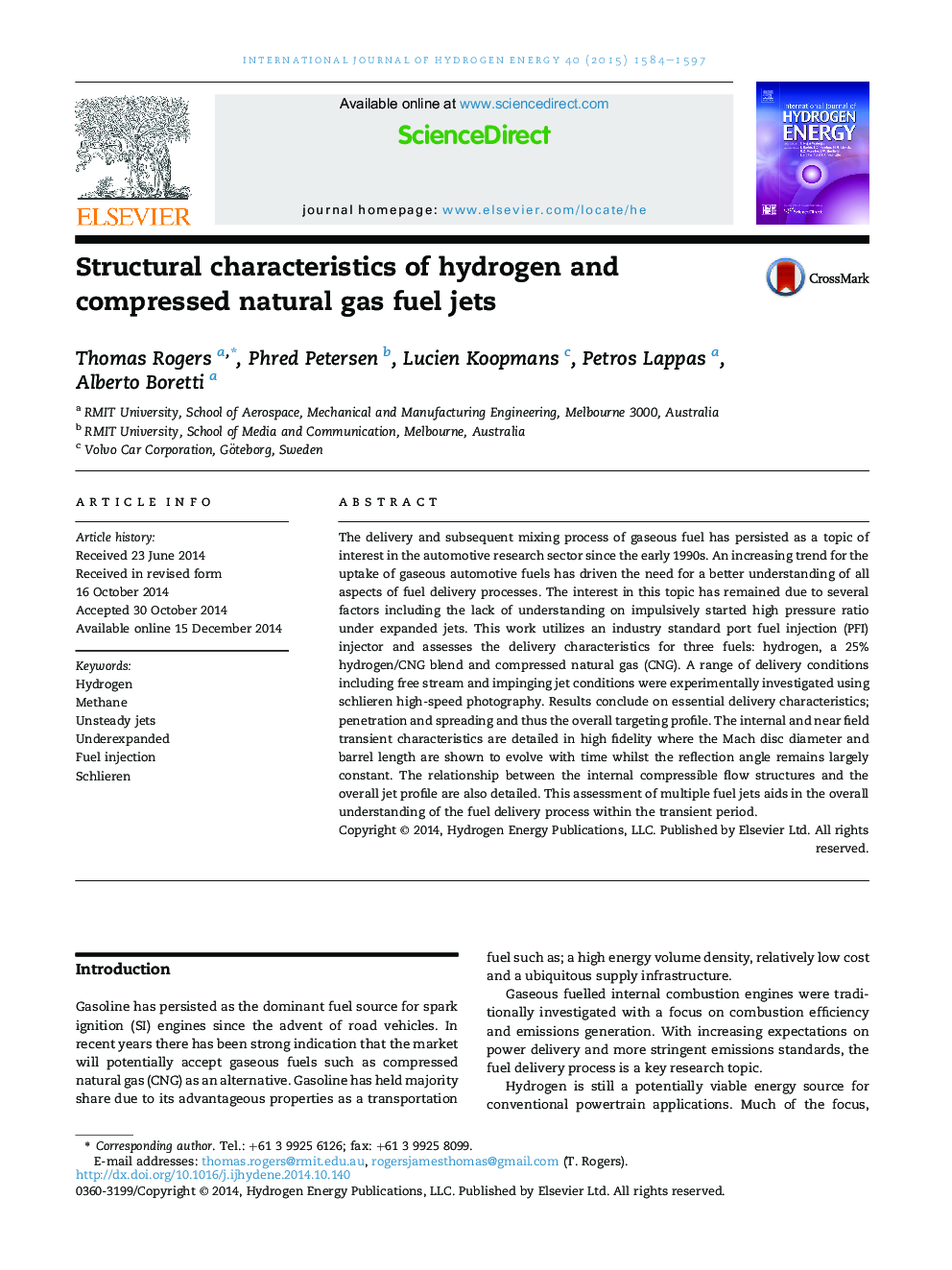| Article ID | Journal | Published Year | Pages | File Type |
|---|---|---|---|---|
| 1270144 | International Journal of Hydrogen Energy | 2015 | 14 Pages |
•Transient nature of three fuel jets have been measured at engine-like conditions.•Transient and steady Mach disc barrel length and diameter have been characterised.•The barrel length was shown to be dependent on fuel type.•The behavior within the jet core is shown to affect the radial boundary development.•Mach disc reflection angle remains constant within its oscillation period.
The delivery and subsequent mixing process of gaseous fuel has persisted as a topic of interest in the automotive research sector since the early 1990s. An increasing trend for the uptake of gaseous automotive fuels has driven the need for a better understanding of all aspects of fuel delivery processes. The interest in this topic has remained due to several factors including the lack of understanding on impulsively started high pressure ratio under expanded jets. This work utilizes an industry standard port fuel injection (PFI) injector and assesses the delivery characteristics for three fuels: hydrogen, a 25% hydrogen/CNG blend and compressed natural gas (CNG). A range of delivery conditions including free stream and impinging jet conditions were experimentally investigated using schlieren high-speed photography. Results conclude on essential delivery characteristics; penetration and spreading and thus the overall targeting profile. The internal and near field transient characteristics are detailed in high fidelity where the Mach disc diameter and barrel length are shown to evolve with time whilst the reflection angle remains largely constant. The relationship between the internal compressible flow structures and the overall jet profile are also detailed. This assessment of multiple fuel jets aids in the overall understanding of the fuel delivery process within the transient period.
